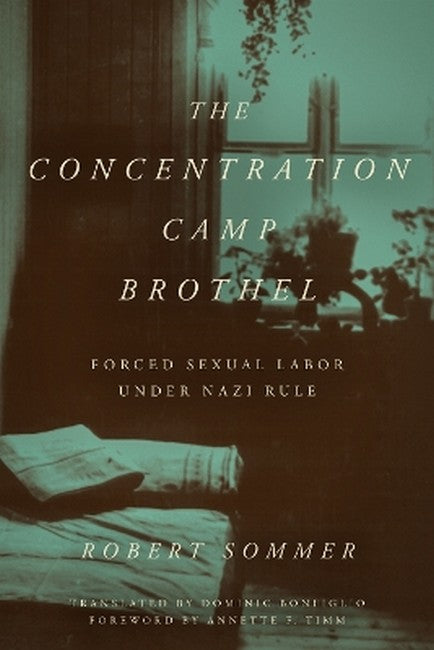Robert Sommer (Author) Robert Sommer is a distinguished historian specializing in the intersections of violence, sexuality, and human rights, with a focus on the Holocaust. He teaches at the University of Cooperative Education, Berlin, Germany. Sommer has served as a historical consultant for museums and film productions, including the BBC documentary Auschwitz: The Nazis and the Final Solution (2005). Dominic Bonfiglio (Translator) Dominic Bonfiglio is a translator with a background in Germanic studies and philosophy. His translations are known for their precision and clarity, making German scholarship accessible to a global audience.
Request Academic Copy
Please copy the ISBN for submitting review copy form
Description
List of Tables vii Foreword by Annette F. Timm ix Preface xvii Introduction: Myths and Taboos 1 1 Prostitution in Nazi Germany 15 2 Concentration Camps and Forced Labor 29 3 Recruitment 58 4 Space and Organization 77 5 Sexuality in the Camps 98 6 The Lives of Forced Sex Workers 114 7 Brothel Visitors 137 8 Perception and Resistance 148 9 The Camp Brothel: An Outpost of Nazi Biopolitics 160 Acknowledgments 167 Appendix: Brief Histories and Sex Worker Statistics by Camp 169 Notes 203 Sources and Bibliography 317 Photos follow page 166
A heart-stopping, stunning, and tremendously significant book. Sommer offers a brilliant and sensitive critical examination of a vast primary source base of new archival materials and a-multidimensionally-conceptually innovative analysis.---Dagmar Herzog, author of The Question of Unworthy Life: Eugenics and Germany's Twentieth Century and Sexuality in Europe: A Twentieth-Century History Myths and mystifications have obscured our knowledge about brothels in Nazi concentration camps for a long time. Sommer's impeccably researched study establishes the relevant facts and explores motives and rationales of the planners and organizers of the brothels without losing sight of the suffering of the victimized women. A must-read for students of sexual violence, Nazi Germany, and the Holocaust.---Thomas Kuehne, Strassler Colin Flug Professor of Holocaust History at Clark University The original German version of this landmark study swept aside many misconceptions about these forced sex workers, which had led to their stigmatization. This updated English edition is especially welcome in bringing Sommer's research to a wider audience. It was Himmler's far-fetched idea that the incentive of brothels would increase productivity among concentration camp workers--it did not. Although these prisoners have been excluded from historical accounts, Sommer has managed to identify by name 174 of the just over 200 women forced into this degrading labor. Particularly impressive is his meticulously researched appendix, giving detailed information about these inmates for each of the ten camp brothels that existed, in some cases with not only their nationality and age, but also their occupation before the war--few had been prostitutes. This will now be required reading for those interested in the Holocaust, the camps and the history of sexuality.---Geoffrey J. Giles, University of Florida A powerful argument why these brothels should be understood as an integral part of the National Socialist camp system and its racial and political ideology. Sommer manages to uncover the identity of nearly 80% of the female inmates enslaved in this system offering an unprecedented look into the journey of the victims.---Pascale Bos, author of "Barter, Prostitution, Abuse? Reframing Experiences of Sexual Exchange during the Holocaust," The Journal of Holocaust Research and Steering Committee Member of International Research Group "Sexual Violence in Armed Conflict" (SVAC)

